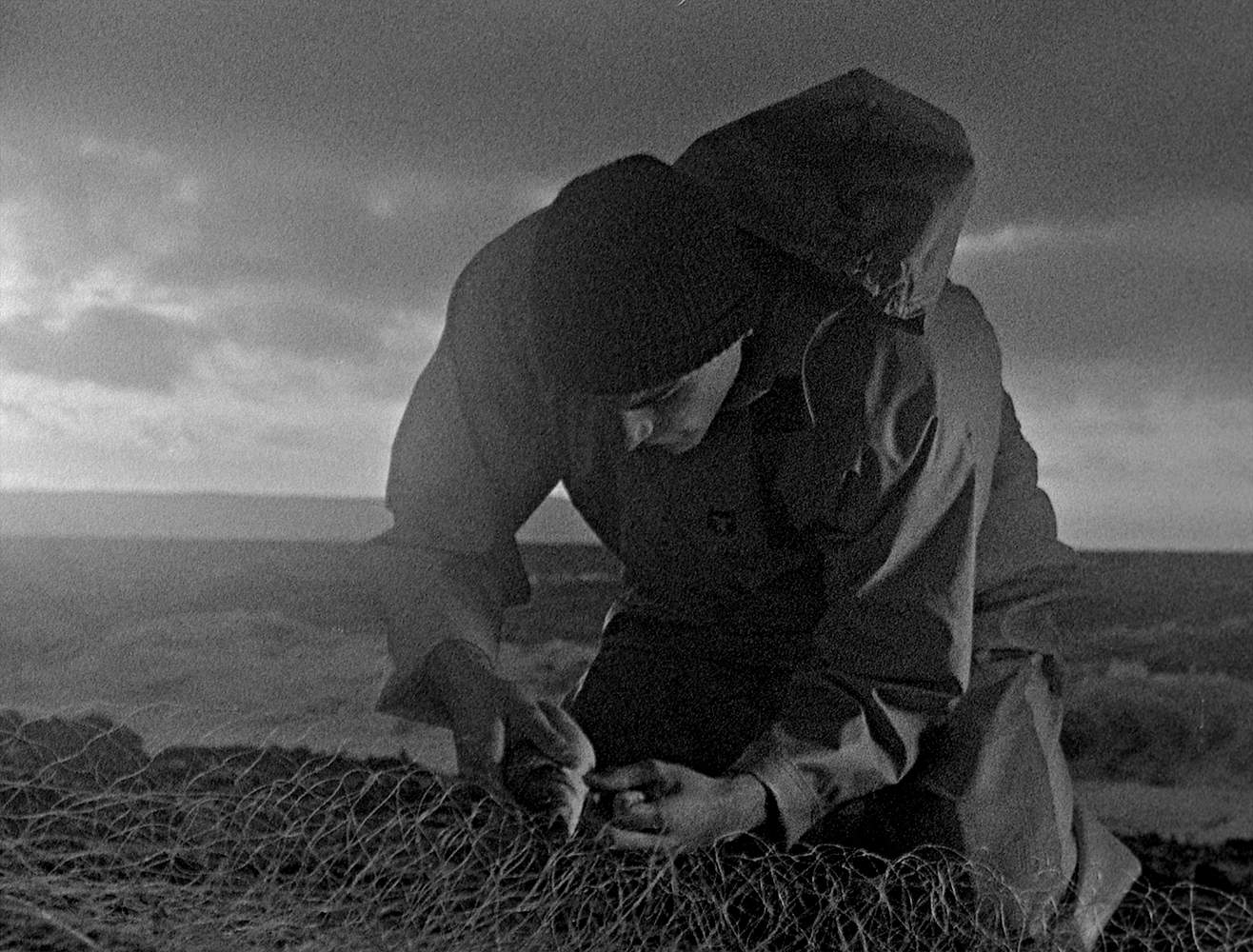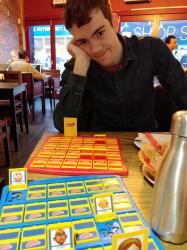
Film Editor Samuel Zucca revels in the celluloid of Bait, which follows a confrontation between the locals and tourists in a small Cornish town
Despite wearing the title of an aquatic b-movie horror, Bait is a film about fishing. It gives much attention to the strenuous process of the craft; laying nets along the beach, casting a lobster pot into the sea, and making little money from the rewards. It’s also a film about the fishermen, their community, and how they come into conflict with the tourist industry that seems to repay very little to Bait’s unnamed Cornish village. It’s not quite fantasy or reality, but an honest allegory told through the timeless language of cinema. Every frame and sound brings to the surface tensions that would hide behind layers of subtext in a documentary, and the bold visual style allows the message of the film to have its full impact, without being too on-the-nose or diluted through dialogue.
the underlying tension is one that is painfully relevant right now, with overtourism becoming a worldwide issue
Bait primarily follows Cornish fisherman Martin as he struggles to save money for a boat, after selling his house to B&B landlords from London. He refuses to work with his brother, driving tourists on boat trips, and the locals seem both crippled and dependent upon the tourist industry. Director Mark Jenkin initially pitched the idea as a battle between tourists and natives, and even though the finished film is far less extreme, the underlying tension is one that is painfully relevant right now, with overtourism becoming a worldwide issue. In Bait’s village; this happens economically with Martin having sold his childhood home and the pub being closed in the winter, and also culturally, with Martin’s old home being renamed ‘skipper’s cottage’ and decorated with nautical paraphernalia – another sting in the eye.
The film has been in development for over twenty years, with the idea coming in wake of the August 1999 eclipse, which saw many British tourists flood to Cornwall to see it. Bait is very much an inversion on outsider films, where a protagonist would go to an unfamiliar, often rural location in order to find solace (Sean Penn’s Into the Wild is an imperfect example of this). In Bait, the viewpoint is from the locals, and how disruptive these outsiders can be.
the fragility and preciousness of the physical film becomes apparent when watching, as scratches and bits of dust become embedded into the celluloid film
Throughout the film there is a constant focus on physicality, and this is especially significant considering the technical development of the film. Shot on a vintage 16mm film camera and monochrome Kodak stock, the fragility and preciousness of the physical film becomes apparent when watching, as scratches and bits of dust become embedded into the celluloid film. The old camera Jenkin used informed the creative process as well. As a physical and cumbersome object to pay for and develop, not a frame is wasted. At the beginning and end of each roll, Jenkin would take close-ups and cutaways of the location, most of which end up in the finished film instead of the cutting room floor. The effect this has is disorienting and perhaps irrelevant at times, but overall it manages to bring out some truly unique moments of editing. It adds to the focus on Martin’s craft, showing his mundane process of laying out a net and later tugging fish out of it. It’s also used to create an unnerving tension with frequent flashbacks and flash forwards. They create simple motifs like a lobster pot, a knife, and hands being handcuffed, all of which gain different meanings as the film progresses.

Another limitation of the vintage camera was that it was too loud for any sound to be recorded on location. Therefore, every sound in the film, even the dialogue, is post-synced. This adds to the old-fashioned style of the film and is an interesting blend of deliberate and unintended aesthetics. Other recent films have used the aesthetics of old-fashioned films to convey it’s meaning, The Artist being very successful at this. Everything from the odd acoustics of the voices to the 4:3 aspect ratio, tricks the brain that this is from another era. It becomes more unsettling then when Range Rovers and Waitrose shopping bags start invading the screen – incidentally, brought over by the London tourists. There’s a disconnect not only in culture but in wealth also, which the film exemplifies even in its physical form.
It may sound confusing, but it’s utterly mesmerising
What Bait captures best however, is the emotion of its characters. You can sense the desperation, bitterness, and frustration of the townspeople, especially Martin. The resentment is amplified at certain points by rapid cuts, between two and sometimes three different scenes at a time. It may sound confusing, but it’s utterly mesmerising. Particularly at the climax of the film, methodically taking us from one scene, face, or item, to the next, played at the volume of the whisper. It’s basic, but quite thrilling stuff. Then there are the performances, which even in an overdubbed form is terrific. Edward Rowe as Martin conveys a numb exasperation, speaking with a dry and bitter voice, blunt rhythmic dialogue like: ‘What’s on?’ ‘Nothing much’, ‘Getting money?’, ‘Not enough.’ Then there’s Chloe Endean as Wenna, full of wit and cheek as she speaks about the tourists, ‘he’s so posh, I honestly thought he was speaking German.’ And then Giles King as Martin’s brother Steven, who doesn’t appear often, but is there to deliver the full emotional impact of Bait’s tragedy. ‘They’ve knocked mother’s pantry down’, he says at the end of the film, remarking on their childhood home, now taken from them.
Verdict
Bait is something that will be a tough sell to many, as an experimental film about Cornish fishermen. It’s an inviting experience however, and endlessly watchable across it’s brisk 90 minute runtime. It has a huge heart as well, with a very important message about the tourism industry. So treat this review as a kind of bait, let the film reel you in, and find yourself getting caught by its charm.
9/10
Bait is in cinemas now.
Images TM and © Early Day Films and the British Film Institute. All Rights Reserved.

Comments